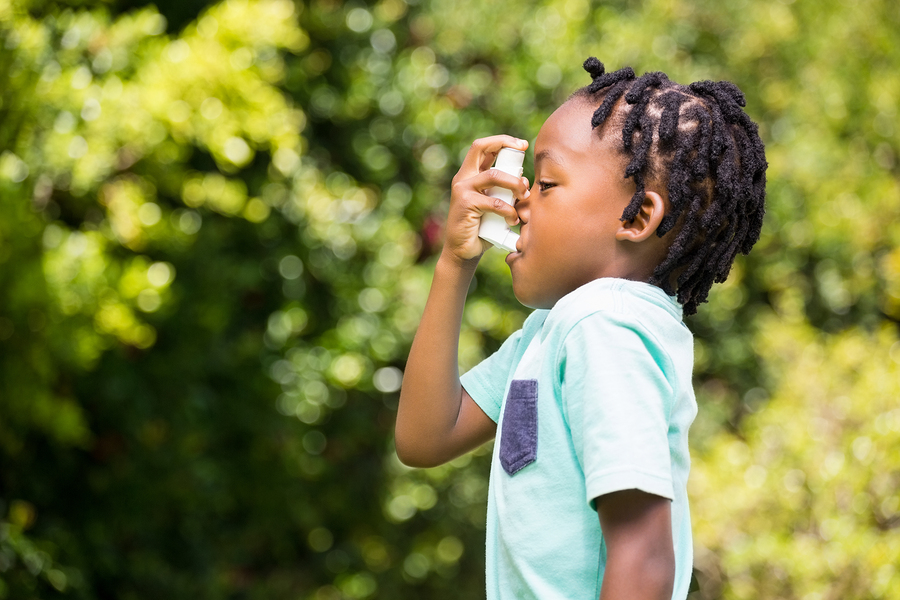Some children are allergic to certain foods, medicines, insects and latex. When they come into contact with these things they develop symptoms, such as hives and shortness of breath. This is known as an allergic reaction. Things that cause an allergic reaction are called allergens. Take all allergic symptoms seriously because both mild and severe symptoms can lead to a serious allergic reaction called anaphylaxis (anna-fih-LACK-sis). Some children are allergic to certain foods, medicines, insects and latex. When they come into contact with these things they develop symptoms, such as hives and shortness of breath. This is known as an allergic reaction. Things that cause an allergic reaction are called allergens. Take all allergic symptoms seriously because both mild and severe symptoms can lead to a serious allergic reaction called anaphylaxis (anna-fih-LACK-sis).
Anaphylaxis Symptoms
Anaphylaxis symptoms may occur shortly after having contact with an allergen and can get worse quickly. You can’t predict how your child will react to a certain allergen from one time to the next. Both the types of symptoms and how serious they are can change. So, it’s important for you to be prepared for all allergic reactions, especially anaphylaxis. Anaphylaxis must be treated right away to provide the best chance for improvement and prevent any serious, potentially life-threatening complications.
Anaphylaxis symptoms usually involve more than one part of the body such as the skin, mouth, eyes, lungs, heart, gut, and brain. Some symptoms include:
- Skin rashes and itching and hives
- Swelling of the lips, tongue or throat
- Shortness of breath, trouble breathing, wheezing (whistling sound during breathing)
- Dizziness and/or fainting
- Stomach pain, vomiting or diarrhea
- Feeling like something awful is about to happen
- Your child’s doctor will give you a complete list of symptoms.
Be Prepared for Anaphylaxis
It is important to keep an emergency plan with you. You, your child, and others who supervise or care for your child need to recognize the signs and symptoms of anaphylaxis and how to treat it. Your child’s doctor will give you a written step-by-step plan on what to do in an emergency. The plan is called an allergy emergency care plan or anaphylaxis emergency action plan. To be prepared, you, your child, and others who care for your child need to have copies of this plan.
About Epinephrine
Epinephrine is the medicine used to treat anaphylaxis. The emergency action plan tells you when and how to give epinephrine. You cannot rely on antihistamines to treat anaphylaxis.Learn how to give your child epinephrine. Epinephrine is safe and comes in an easy-to-use device called an auto-injector. When you press it against your child’s outer thigh, it injects a single dose of medicine. Your child’s health care team will show you how to use it. You, in turn, can teach people who spend time with your child how to use it.
Common Causes of Anaphylaxis
- The most common food allergies are eggs, milk, peanuts, tree nuts, soy, wheat, fish and shellfish. The most common food allergies in infants and children are eggs, milk, peanuts, tree nuts, soy and wheat.
- Insect stings from bees, wasps, yellow jackets and fire ants.
- Latex found in things such as balloons, rubber bands, hospital gloves.
- Medicines, especially penicillin, sulfa drugs, insulin and nonsteroidal anti-inflammatory drugs (NSAIDs) such as aspirin and ibuprofen.
How to Avoid Anaphylaxis
The best way to avoid anaphylaxis is for your child to stay away from allergens. Teach your child about his or her allergy in an age-appropriate way. Teach your child to tell an adult about a reaction, how to avoid allergens and how and when to use an epinephrine auto-injector. Here are some first steps you can take for each type of allergy:
- Food. Learn how to read food labels and avoid cross-contact. Read the label every time you buy a product, even if you’ve used it before. Ingredients in any given product may change.
- Insect allergies. Wear closed-toe shoes and insect repellent when outdoors. Avoid loose-fitting clothing that can trap an insect between the clothing and the skin.
- Medicine allergies. Tell your doctor about medicines your child is allergic to. Know both the generic and brand names of the medicines.
- Latex allergies. Tell your doctors, dentists and other health care providers about your child’s latex allergy. Ask them to put a note in your child’s medical chart about your child’s allergy. Also remind them of the allergy before any medical procedure or test.
Treatment with Dr.Shukla
Dr. Shukla of Brooklyn New York has been in practice for more than 15 years. He has provided the answers and treatments to many children suffering from asthma, allergies, and sleep apnea. Here at the Asthma, Allergy and Sleep Center of New York, we provide you with a personalized, boutique approach to health care and pediatric pulmonology all under one roof. We emphasize prevention and use our advanced diagnostic technologies to give you and your child the best possible care. Contact us here today.

